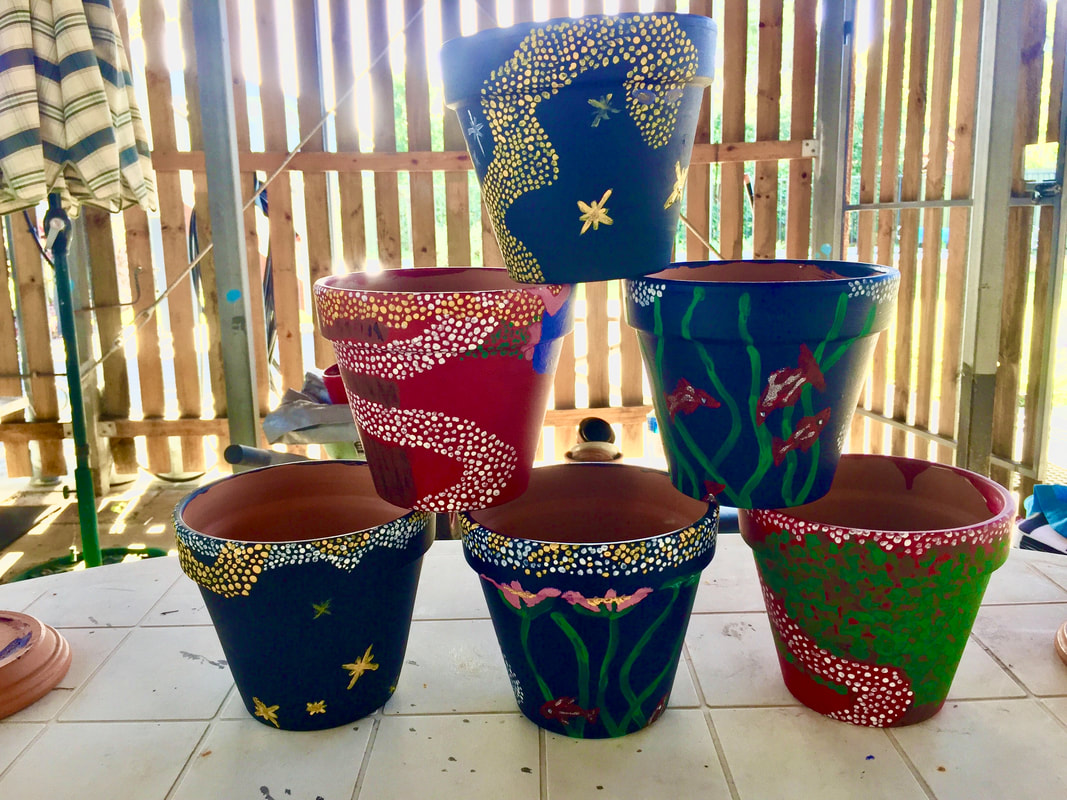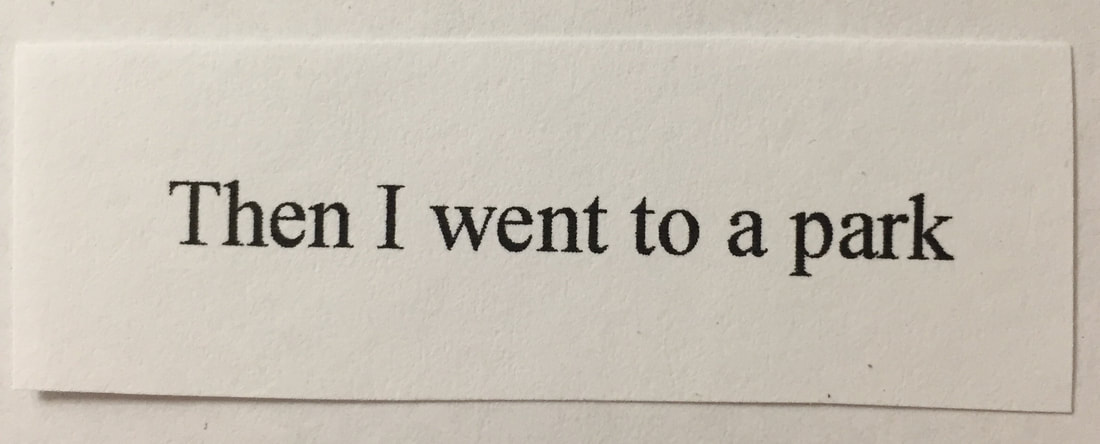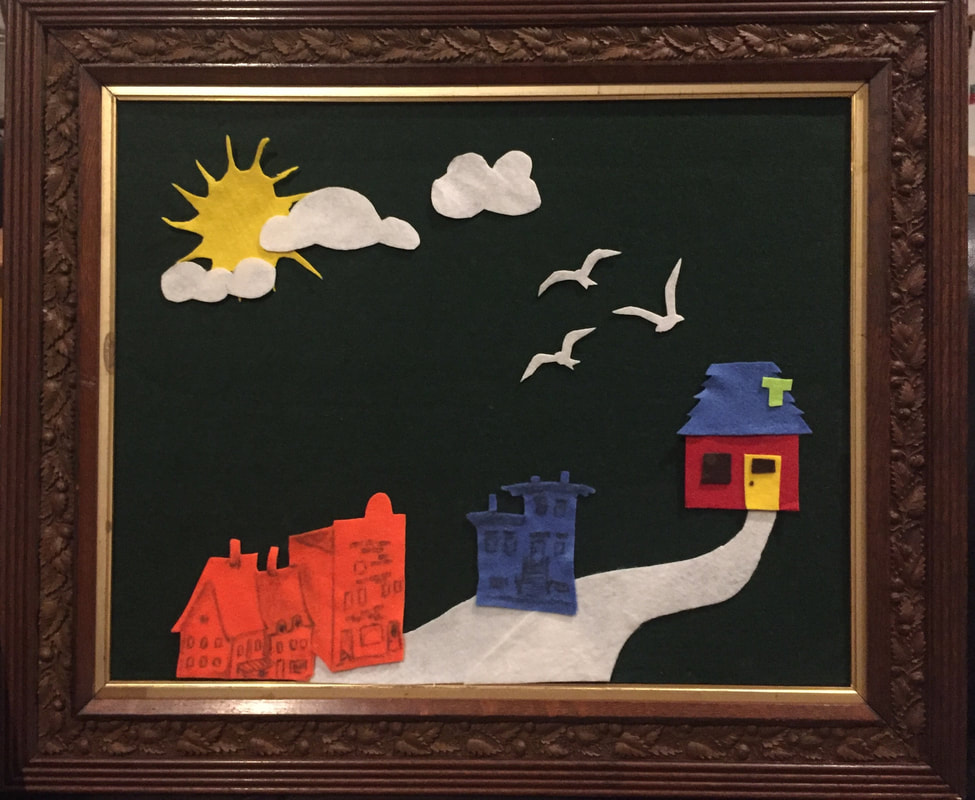Adopting the terracotta plant pots storytelling format (see below), I submitted an idea to the VISTA group on the island. VISTA is dedicated to 'undertaking improvements to various sites in the town centre. Energex has been very supportive towards the group’s vision to improve The Village’s streetscape making it more vibrant, aesthetic and user-friendly for the benefit of the whole community.'
In her book Stradbroke Dreamtime, Aboriginal poet and Aboriginal rights campaigner Oodgeroo Noonuccal (Kath Walker) gives us an account of how the Southern Cross came into being. It is based on the stories she heard when she was growing up with her family on Minjerribah (Stradbroke Island) off the coast of SE Queensland. Biame, the Good Spirit was extremely busy keeping an eye on the Aboriginal people but found he could not watch them all the time. He decided that he needed the assistance of someone to help him in his guardianship of his people. He chose a man named Mirrabooka who was not only loved by everyone but also looked after the welfare of his people. Biame gave him a spirit form and placed him in the sky among the stars, and promised him eternal life. Biame gave Mirrabooka lights for his hands and feet and stretched him across the sky, so that he could watch for ever over the tribes he loved. And the tribes could look up to him from the Earth and see the stars which were Mirrabooka's eyes gazing down on them.
Storytelling takes many forms. I created a story using terracotta plant pots, painting each so that individually and collectively, they all tell a story.
Once assembled, all the stories merge to tell a bigger story.
The story sculpture can be placed anywhere in the garden or used as their intended purpose. Important to seal the pots before painting (I used water based, poster paint) and to add a clear lacquer afterwards. Both the sealant and lacquer can be found in a spray can.
The story sculpture can be placed anywhere in the garden or used as their intended purpose. Important to seal the pots before painting (I used water based, poster paint) and to add a clear lacquer afterwards. Both the sealant and lacquer can be found in a spray can.
Young people love to build stories around pictures. This example is using sequence words with photos to create a story; who knows where it will lead.
Felt boards are a great way of storytelling whether using original ideas or transposing an existing story. Make up a story and use some stock felt cut-outs that might include a sun, moon and stars, birds, animals, buildings, trees, flowers, people and so on. Once you start there are endless stories to tell.
I thought I'd try to recreate a much loved children's story on a felt board just to see how it looks, seeing I had a beautiful wooden frame doing nothing. Still drawing and cutting out the rest of the tale.
The Man Who Didn’t Wash His Dishes - Book by Phyllis Krasilovsky - Illustrated by Barbara Cooney
I thought I'd try to recreate a much loved children's story on a felt board just to see how it looks, seeing I had a beautiful wooden frame doing nothing. Still drawing and cutting out the rest of the tale.
The Man Who Didn’t Wash His Dishes - Book by Phyllis Krasilovsky - Illustrated by Barbara Cooney
Another idea for storytelling to groups of children. Stuffing removed from the torso of each bunny and wide ribbons attached to the legs, tied under the chin keeps them in place.

























